Despite the hopes of most and the preconceptions of many, news from the Lepton-Photon conference in Mumbay, India, report that the Standard Model is as alive and strong as it has ever been. Indeed, the recent searches for Supersymmetry by ATLAS and CMS, now analyzing datasets that by all standards must be considered "a heck of a lot of data", have returned negative results and have placed lower limits on sparticle masses at values much larger than those previously investigated (by experiments at the Tevatron and LEP II).
Similar is the tune being sung on the B-physics sector, now being…
Physics
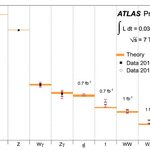
If you work in experimental high-energy physics you soon acquire a particular sensitivity to the economical display of relevant information. Producing figures that convey the most meaning with the minimum effort is sort of an art, and it is a necessary consequence that HEP experimentalists -the smart ones- end up converging on the definition of graphs which are better than all others in this respect.
There is a deep, pragmatical reason, by the way, why economical display of information is valuable for a HEP experimentalist: we see far too many graphs every day... And most of them are…

"In a world of string theory, I can be the Pope [...]. I just need to modify dilatonic Einstein-Gauss-Bonnet theory with low-energy heterotic string theory and it's all quite easy."
H. Campbell

I don't like Steven Weinberg.Good, I have said it. I will provide a brief biographical sketch and a short list of his lengthy accomplishments. I read one of his science outreach books, "Dreams of a Final Theory: The Search for the Fundamental Law of Nature". I will pluck out three issues from the book to show why our scientific beliefs are divergent.
Steve-o went to the Bronx High School of Science. That school's reputation towers above all others in the nation, public or private. The school is a magnet pulling from the vast pool of scrappy New York City kids.Click or skip this reading…
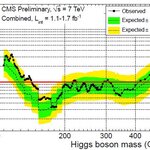
I have written enough today about the topic of Higgs boson searches at the LHC by discussing the new ATLAS limits (see previous post), but I feel that, before going to bed, I need to point out the new results on the same topic by CMS, the competitor experiment. As you know, I work in CMS and I have to be twice as cautious when I write about the results of my own experiment, because some of my colleagues have uncovered nerves when it comes to blogs. However, the little I'll say here tonight should cause no discomfort to anybody.
So, CMS did the same exercise that I described a few hours back…
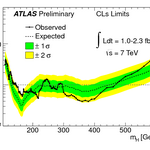
Much awaited, the results of searches for the Higgs boson at the Large Hadron Collider have been released by the ATLAS collaboration, and are being shown at the Lepton-Photon conference in Mumbay, India. I will provide here just the main results, with little commentary - I wish to let the cake cool down a bit before discussing the subject in detail, examining the various inputs.
So let us jump to the money plot: the combined limit produced by ATLAS by putting together information from a dozen search channels, which employ from 1.0 to 2.3 inverse femtobarns of proton-proton collision data at 7…
In my latest instantiation of the "Guess the plot" series I offered a clipped part of a graph showing branching fractions of the Higgs boson. One of the readers made a comment which I was proud to read, since it showed that interested readers of this blog with no specialized education in particle physics can get to know quite a lot about the matter. I answered there more extensively than I do on average, and then I thought that the answer could be of some use to others to whom the thread had fallen out of the horizon. So I am recycling it here.
Before I do that, however, let me give an entry…

Like it or not, the Tevatron is going to shut down for good next month. This machine has provided us with tremendous new investigation power in the high-energy frontier of particle physics, and has led the research of hadronic collisions for over two decades. But all good things come to an end.
When I gave a look at the Arxiv this morning and saw a nice new paper by DZERO on the production of single top quarks, I could not help thinking that this is about it, as far as Tevatron single top studies are concerned, speaking of course of DZERO contribution to this particular topic. The analysis…
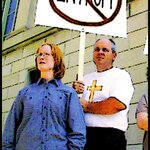
Use your browser's back button and stop reading when you can't handle speculations out of a hammock.
Still reading?
Ok, I have warned you. Brace yourself. I am going to argue against what many believe to be the most fundamental law of physics. A sacrosanct law. A law that you experience everyday and that is so obviously true that no one should meddle with it. You all know this law. It's the law referred to as 'the second'. The second law of thermodynamics.
Ok, don't blow it hammock guy. You can argue against every concept in physics, but don't touch the second law of thermodynamics! You don'…
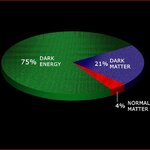
One problem with the acceptance of dark energy and dark matter is that they are presented as if they are brothers, as if presenting merely the start of a new line of cheap ad hoc fudge factors: Dark energy, dark matter, dark force, what next? However, dark energy is not a fudge factor and not new.
Similar has been pointed out before, namely that dark energy is much less weird than usual pressure in Einstein’s general relativity:
The crazy point about dark energy is that something that pulls itself together expands, right? But that is not the contribution of dark energy. That part is usual…
